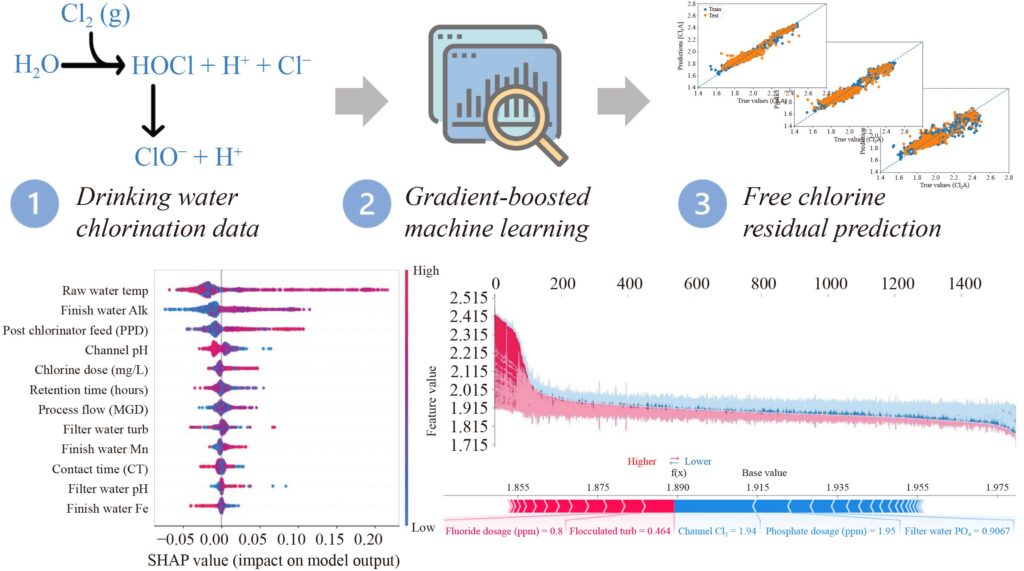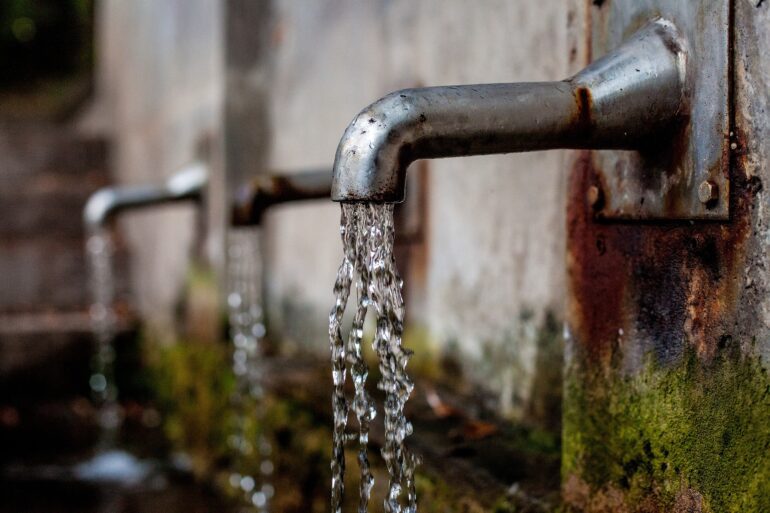TL;DR:
- Small rural drinking water treatment (DWT) plants often rely on chlorine for disinfection, with free chlorine residual (FCR) as a crucial metric.
- Accurately determining FCR has been challenging, requiring operator estimates.
- A recent study in Frontiers of Environmental Science & Engineering demonstrates the potential of gradient boosting (GB) ML models, particularly CatBoost, to predict FCR accurately.
- Input data collected from a Georgia DWT plant encompassed diverse monitoring records and operational parameters.
- The study involved four iterations of ML modeling, with the fourth iteration focusing on intuitive parameters and water quality downstream from filtration.
- SHapely Additive explanation (SHAP) method was employed to interpret ML models, revealing influential parameters.
- Key findings include the accuracy of ML predictions with related input parameters, the ability to identify correlations with or without a physical basis, and the similarity of ML models to operator experience.
- Future studies are encouraged to expand data availability to broaden the applicability of ML models in water treatment monitoring.
Main AI News:
Small, rural drinking water treatment (DWT) plants have historically relied on chlorine as the primary disinfection agent, with the concentration of free chlorine residual (FCR) serving as a critical performance metric. However, determining an accurate FCR has been a longstanding challenge for plant operators, often requiring estimates and guesswork.
In recent years, the advent of advanced free chlorine residual prediction techniques has transformed the landscape of water treatment monitoring. Leveraging the power of machine learning (ML) algorithms, these innovative approaches promise precise FCR predictions even from cost-effective, low-tech monitoring data.
In a groundbreaking study featured in the prestigious Frontiers of Environmental Science & Engineering, researchers have successfully harnessed the potential of gradient boosting (GB) ML models, incorporating categorical boosting (CatBoost) to predict FCR levels. GB algorithms, such as CatBoost, compile decision trees to formulate the prediction function, offering a sophisticated solution to the long-standing challenge of accurate FCR determination.
The study’s input data was meticulously gathered from a DWT plant in Georgia, USA, encompassing a diverse range of DWT monitoring records and operational process parameters. The research unfolded through a comprehensive approach comprising four iterations:
- Base case
- Rolling average
- Parameter consolidation
- Intuitive parameters
Furthermore, the research team employed the SHapely Additive explanation (SHAP) method, a cutting-edge open-source software, to interpret the ML models with a multitude of input parameters. SHAP enables a visual understanding of each parameter’s impact on the prediction function, elucidating the factors influencing the FCR prediction. Notably, the SHAP analysis identified the channel Cl2 as the most influential parameter.
Among the four iterations, the fourth and final iteration, focusing solely on intuitive physical relationships and water quality downstream from filtration, yielded significant insights. Key findings include:
- ML models can yield accurate predictions when equipped with a sufficient number of related input parameters.
- ML models can identify correlations, whether or not they possess a direct physical basis.
- ML models can be likened to operator experience in their predictive capabilities.
Looking ahead, the research team advocates for expanding the applicability domain of these transformative ML models. The dataset analyzed in this study was limited to a single year, underscoring the potential for greater data availability to enhance the predictivity and broaden the practical utility of these revolutionary water treatment monitoring techniques.

Source: Frontiers of Environmental Science & Engineering (2023)
Conclusion:
The integration of machine learning in water treatment monitoring offers a game-changing solution to the longstanding challenge of accurate FCR determination in small DWT plants. This technological advancement not only enhances the efficiency of water treatment processes but also opens up new opportunities for cost-effective and reliable water quality management in rural areas. It signifies a positive market trend towards more sophisticated and data-driven solutions in the water treatment industry, driving improved performance and sustainability.

